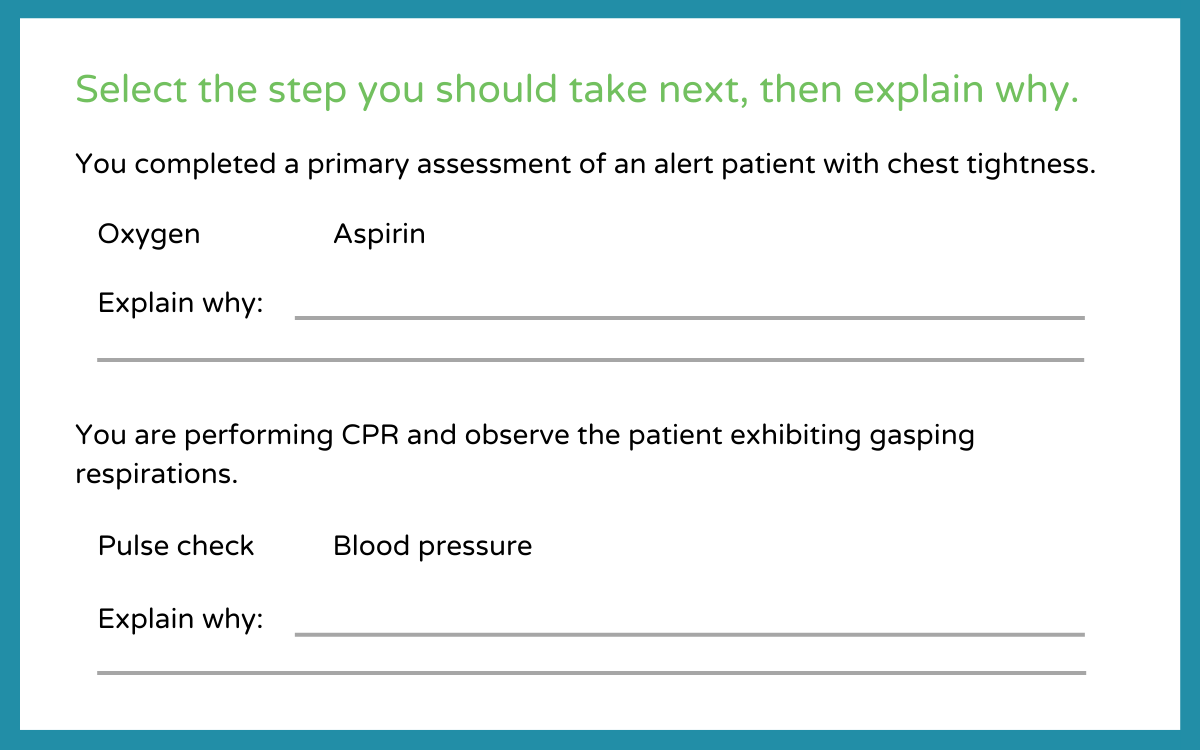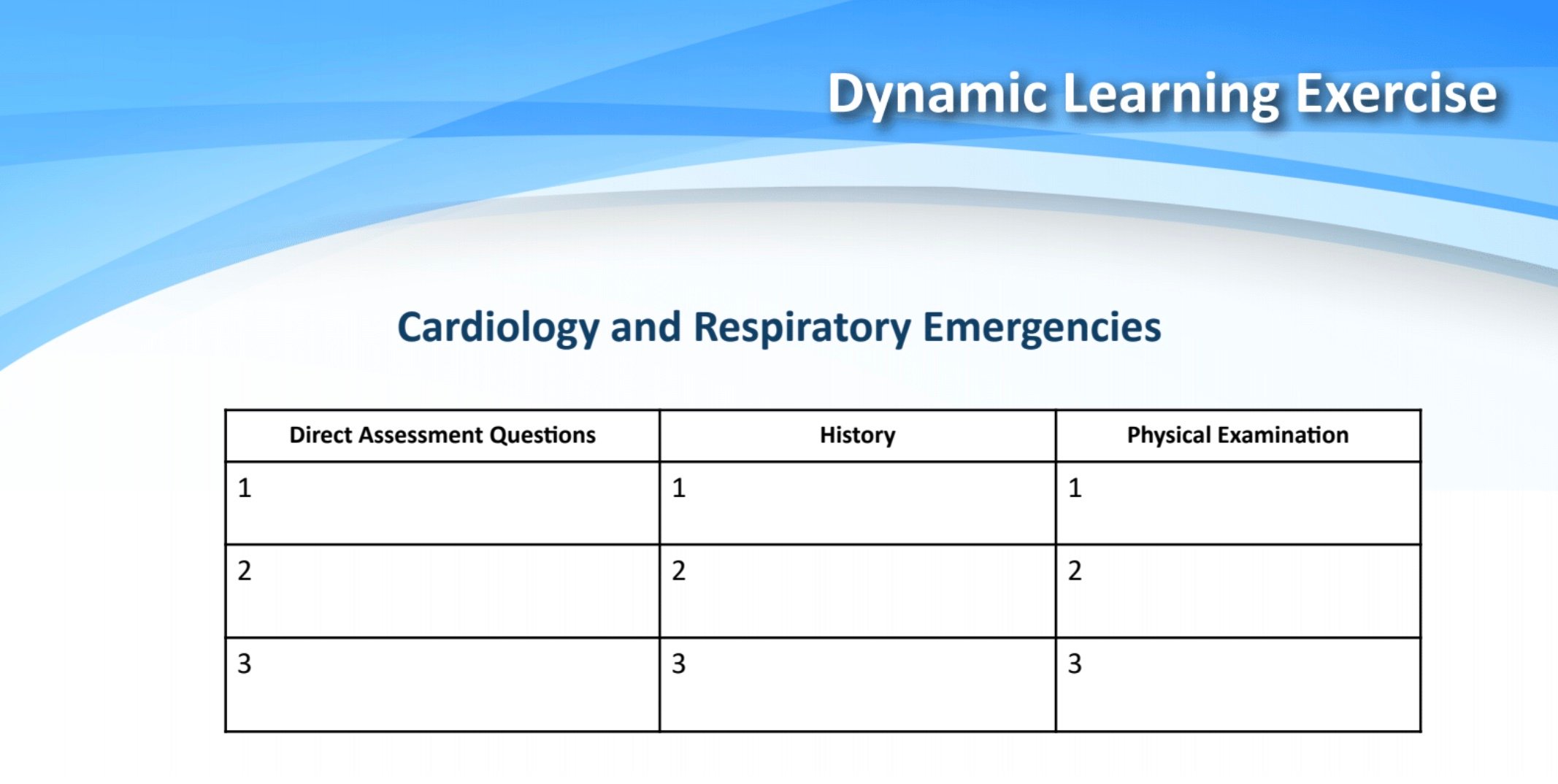
Dr. Bill Young

by Limmer Education
Our articles are read by an automated voice. We offer the option to listen to our articles as soon as they are published to enhance accessibility. Issues? Please let us know using the contact form.
Your EMS students have two big hurdles ahead of them: passing the NREMT and becoming a confident, competent provider. The same set of critical thinking skills is needed for both – and it’s up to you as their educator to develop their thinking skills.
We’ve used the baseball analogy in the past to describe EMS education. In the middle, you have the cork, representing knowledge. The twine wrapped around that represents skills. The fine leather cover sewn over those things represents application and critical thinking. This last layer is what holds everything else together and makes it functional.

As Dan likes to say: I can teach you, but I can’t learn you.
In other words, not all teaching equates to students learning. When deciding what content/skills to teach and which teaching methods to use, go for what is best for student learning.
This might be hard if you’re used to trotting out the same lesson plans year after year. Examine (and maybe change) your mindset, methods, and message for student learning. You can always reference the textbook to help you define objectives for each section.
A few tips:
Focus on effectiveness, not on time.
Embrace the word “maybe.” Be honest with students that not everything is clear-cut.
Encourage thinking over memorization.
Students should know why they’re learning what they’re learning. Look at the concept of moist vs. dry skin, and all the things those signs can mean. When students encounter “sudden onset moist skin,” they should immediately know that’s important. It’s one thing to learn about sweaty skin and another thing to recognize it as a key indicator of a problem. Make sure they get the why early on.
Knowledge comes from textbooks and presentations, but understanding comes from discussion and activities.
Students won’t be prepared to answer Registry-style “you should” if most of their learning is memorization-based. Students have to learn how to apply their knowledge. Group activities and learning exercises test their ability to apply and give them practice.
It’s much easier to teach application in a flipped classroom setup – hopefully, you are familiar with the concept by now. Textbook reading and exercises are done out of class. Teaching time covers highlights of the textbook, but it’s mostly spent in discussion talking about what they learned and how to apply it. (And if students don’t do the homework, they fail. It’s a simple system.)
Here's an example of how to turn memorization-based questions into application questions. Students have to have the basic knowledge to get the first part of the question right, but then they have to apply that knowledge point by explaining why they should choose one course of action over another.

When we talk about the concepts of thinking and problem solving, we look for students’ ability to value, prioritize, and differentiate. Traditional lectures and labs don’t provide these opportunities.
Can your students value and differentiate signs and symptoms?

What should be valued in this question? The smoking history, if overvalued, can lead to picking the incorrect answer (A or C). Focusing on “bad lung sounds” instead of paying attention to the type and location of those sounds can also lead them astray. Valuing the more relevant information (chest pain, crackles in lower lobes) leads to the correct response – D, myocardial infarction.
Useful activities here are those that ask students to make decisions about the patient’s condition and what to do about it. For example, our Cardiology & Respiratory dynamic learning exercise helps students focus their assessment efforts by identifying which details to value and prioritize. In addition to strengthening assessment skills, this leads the way to making well-informed differential diagnoses.

By the time final exam season rolls around, students should have had a semester full of challenging exams and a variety of scenarios that allow them to put their knowledge together and apply it to the street.
Recommended resources include:
Case studies. (We have a few on our website)
Application-based scenarios. (See our dynamic learning exercises)
Quality exam prep that involves reading, understanding, and applying. (Get tips for improving class exams)
It shouldn’t be controversial to say that what students need to know for the street is the same as what they need to know for the NREMT. Identify the content and skills that will make them successful on both, and build that into your curriculum so they’re ready for the real world at the end of the semester.
Your students need to build mojo – i.e., the confidence and can-do attitude they need to pass the exam and make decisions for real patients. As they learn, remind them that they’re going to be good providers. When they struggle, show them that the tough stuff pays off once they learn to put the pieces together.

Dr. Bill Young

Limmer Education